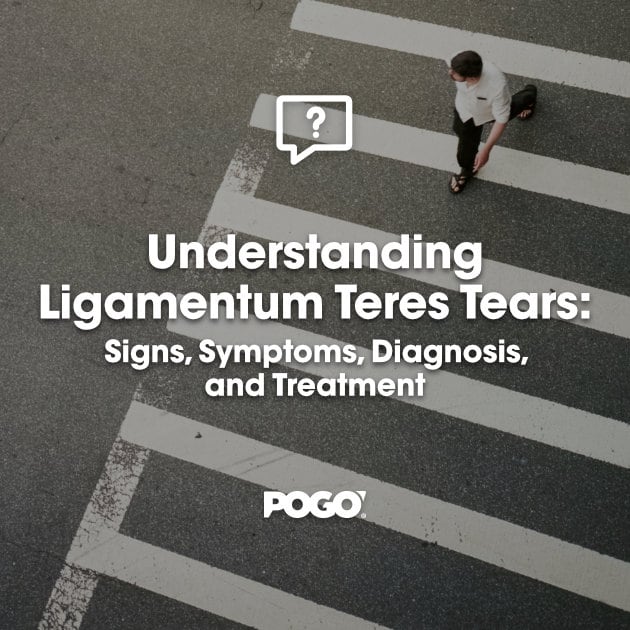Lateral Femoral Cutaneous Nerve Impingement (Meralgia Paresthetica)
Burning, Tingling, or Numbness on the Outside of Your Thigh
Athletes and active people often worry when they feel sharp burning, tingling, or numbness on the outside of the thigh. It can feel like a “hot patch,” buzzing, or even a dead zone in the skin. If that sounds familiar and you don’t actually have back pain or weakness then you may be dealing with irritation of the lateral femoral cutaneous nerve (LFCN), sometimes called meralgia paresthetica (Feigl et al., 2014; Rowley et al., 2024).
This nerve problem is common in runners, field and court athletes, lifters, and anyone who spends long periods standing or wearing tight gear around the waist. It’s also seen in people who’ve recently increased training load or body mass, or who wear belts, harnesses, or compression around the front of the hip (Kho et al., 2005; Rowley et al., 2024).
Most cases respond well to load management and physio. Surgery is rarely required (Rowley et al., 2024).
What is the lateral femoral cutaneous nerve?
The LFCN is a sensory-only nerve. It gives feeling (touch, temperature, pressure, pain) to the skin on the outer and front part of the thigh. It does not make muscles contract, and it does not affect strength (Feigl et al., 2014; Rowley et al., 2024).
The nerve comes from high in the lumbar plexus (L2–L3), then runs toward the front of the pelvis and passes very close to a bony point on the front of the hip (the ASIS) and under or through the inguinal ligament before entering the upper thigh (Feigl et al., 2014).
Here’s the key clinical point: that pathway is not the same in everyone. Anatomical studies have shown the nerve can run under, over, or even split around the inguinal ligament, and can sit more medial or more lateral than expected (Dias Filho et al., 2003). If your nerve runs in a tighter tunnel, it’s easier to mechanically irritate. That explains why two athletes can do the same drills or wear the same waistband pressure, and only one develops symptoms (Dias Filho et al., 2003; Feigl et al., 2014).
Typical symptoms
Common features include:
- Burning, stinging, “electric” pain on the outer/front thigh
- Pins and needles or a numb patch in that same area
- Hypersensitivity — even light contact from shorts or bedsheets can feel sharp or “raw” (Rowley et al., 2024)
Just as important is what we usually don’t see:
- No true leg weakness, because this nerve does not power muscle (Feigl et al., 2014)
- Reflexes are normal
- Symptoms rarely go below the knee
Clinically, patients can often point with two fingers to a very specific zone on the outer thigh and say, “It’s right here.” That focal sensory change is a classic sign (Rowley et al., 2024).
Red flags: if you notice new weakness, loss of control in the leg, groin numbness, or bowel/bladder changes, that’s not typical for lateral femoral cutaneous nerve irritation. Those features raise concern for lumbar nerve root compression and need urgent review (Feigl et al., 2014; Trummer et al., 2000).
Why does it happen?
Most cases are mechanical irritation where the nerve crosses the front of the hip. Common contributors in active populations:
- Tight waistbands, belts, harnesses, tool belts, hip straps
- Compression shorts or gear that digs in at the front of the hip
- Long periods standing, running, skating, marching, or walking
- Rapid changes in abdominal pressure, body mass, or posture (including pregnancy)
- High-volume training that repeatedly loads the hip in flexion (Kho et al., 2005; Rowley et al., 2024)
In some athletes, it can come on after a heavy training block or a camp/tournament where load spikes fast (Kho et al., 2005). In workers, it can present after long days wearing a loaded belt around the waist. Because the nerve’s anatomy is variable, small amounts of pressure in one individual can be enough to irritate or compress it (Dias Filho et al., 2003; Feigl et al., 2014).
This problem is often misread as a quad strain, hip flexor overload, or even “sciatica.” Another important point: certain lumbar disc issues can mimic meralgia paresthetica and create a similar burning sensation in the thigh, which is why screening the lower back is part of proper assessment (Trummer et al., 2000).
How do we assess it?
Diagnosis is mainly clinical. Imaging and nerve studies are not routinely required unless symptoms are atypical or persistent (Rowley et al., 2024).
In the clinic we will typically assess the following areas:
History
We ask where the symptoms are, what they feel like (burning vs. deep ache), what aggravates them, and whether belts/waistbands or long standing make it worse (Rowley et al., 2024). We ask about recent changes in workload, training volume, or body composition (Kho et al., 2005).
Sensory mapping
We lightly test touch and pressure along the outer/anterior thigh. Loss of normal sensation or painful hypersensitivity in the LFCN distribution supports the diagnosis (Feigl et al., 2014; Rowley et al., 2024).
Provocation at the entrapment site
We palpate just inside the ASIS and along the inguinal ligament. Reproducing your familiar “zing,” sting, or pins and needles there is highly suggestive that the nerve is irritated at that level (Rowley et al., 2024; Dias Filho et al., 2003).
Lumbar screen
We screen your lumbar spine and neural tension. This is crucial because a lumbar disc herniation can present like meralgia paresthetica, and those patients may require different management (Trummer et al., 2000).
If assessment matches the clinical picture of lateral femoral cutaneous nerve entrapment and no red flags are present, conservative management can generally begin right away (Rowley et al., 2024).
Management and rehab approach
1. Offload the nerve
The first step is reducing direct compression. This might include loosening belts or tool belts, adjusting waistband height, changing pocket load (keys/phone sitting on that spot), and modifying standing or skating posture if you tend to lean forward and pinch the front of the hip. In sport, we may temporarily dial back drills that repeatedly drive deep hip flexion under load (Kho et al., 2005; Rowley et al., 2024).
For some people, this alone brings quick relief.
2. Desensitise and settle irritability
We use targeted manual therapy around the inguinal region and anterior hip to decrease local tone and sensitivity. We also introduce nerve-friendly movement drills (“nerve glides”) and positioning strategies that reduce pressure and allow the nerve to move more freely under the ligament (Rowley et al., 2024). Because the nerve’s course can differ between people — under, through, or even splitting around the inguinal ligament — this work is individualised (Dias Filho et al., 2003).
Short-term symptom relief is important, but we’re also trying to restore normal sensory input so clothing, training, and sleep become tolerable again.
3. Build capacity
Once irritability is settling, we gradually reload walking, running, change of direction, and game-speed work. We’ll address local contributors like hip flexor tightness, trunk control, and pelvic position so you’re not constantly compressing the same point at the front of the hip (Kho et al., 2005; Rowley et al., 2024).
This is also where we start talking long-term strategies:
- Are you returning to high-minutes play or tournament volume?
- Are you in late pregnancy and planning to stay active?
- Do you wear a uniform belt for work?
The plan will match your sport or role.
4. When to escalate
If symptoms are severe, persistent, or limiting performance despite conservative care, image-guided local injection (for example, targeted corticosteroid around the nerve) can be considered to reduce inflammation and pain. In chronic, high-impact cases that fail everything else, surgical decompression or neurectomy of the lateral femoral cutaneous nerve can provide relief (Rowley et al., 2024).
Large surgical series have shown that understanding the exact anatomic path of the nerve and selecting the correct surgical approach matters for outcomes, which fits with the known anatomical variability around the ASIS and inguinal ligament (Dias Filho et al., 2003; Rowley et al., 2024). That said, surgery is reserved for the minority of cases.
When to get assessed
You should be seen by a physiotherapist or GP if:
- You’ve had burning, stinging, tingling, or numbness on the outside/front of the thigh for more than 1–2 weeks
- It’s clearly aggravated by standing, skating, marching, running, loaded belts, or compression gear
- You feel a defined “dead patch” of skin that isn’t resolving (Rowley et al., 2024)
You should seek urgent medical review (same day) if you develop:
- New lower-limb weakness
- Loss of normal reflexes
- Numbness in the groin region
- Changes to bowel or bladder control
Those features suggest a possible spinal nerve root problem instead of (or in addition to) lateral femoral cutaneous nerve irritation and should be assessed promptly (Feigl et al., 2014; Trummer et al., 2000).
Key points for athletes and active people
- Lateral femoral cutaneous nerve impingement (meralgia paresthetica) is a sensory nerve irritation at the front of the hip that produces burning, tingling, or numbness on the outside of the thigh — without true leg weakness (Feigl et al., 2014; Rowley et al., 2024).
- The nerve’s path is variable. Some people are simply built in a way that puts the nerve in a tighter tunnel, making them more vulnerable to pressure from belts, uniform gear, prolonged standing, or rapid load spikes (Dias Filho et al., 2003; Feigl et al., 2014).
- Physio management focuses on offloading the nerve, calming symptoms, and then rebuilding capacity so you can return to running, change of direction, or work demands safely (Kho et al., 2005; Rowley et al., 2024).
- Screening the lumbar spine is essential, because disc-related symptoms can look almost identical and require different management (Trummer et al., 2000).
Clinical note:
This article is for education only. It’s not an individual diagnosis or treatment plan. If you’re noticing burning or numbness on the outside of your thigh, the physio team at POGO Physio can assess it, rule out red flags, and build a plan around your sport or job demands.

Abe Ofosu
Physiotherapist (APAM)
References
Dias Filho, L. C., Valença, M. M., Guimarães Filho, F. A. V., Medeiros, R. C., Silva, R. A. M., Morais, M. G. V., Valente, F. P., & França, S. M. L. (2003). Lateral femoral cutaneous neuralgia: An anatomical insight. Clinical Anatomy, 16(4), 309–316. https://doi.org/10.1002/ca.10106
Feigl, G. C., Dreu, M., Ulz, H., Breschan, C., Maier, C., & Likar, R. (2014). Susceptibility of the genitofemoral and lateral femoral cutaneous nerves to complications from lumbar sympathetic blocks: Is there a morphological reason? British Journal of Anaesthesia, 112(6), 1098–1104.
Kho, K. H., Blijham, P. J., & Zwarts, M. J. (2005). Meralgia paresthetica after strenuous exercise. Muscle & Nerve, 31(6), 761–763.
Rowley, E. B., Suresh, R., de Rutier, A. G., Dellon, L., & Tollestrup, T. W. (2024). Clinical insights and optimization of surgical approach for lateral femoral cutaneous nerve injury/entrapment: A comprehensive analysis of 184 cases. Annals of Plastic Surgery, 93(2), 229–234. https://doi.org/10.1097/SAP.0000000000003991
Trummer, M., Flaschka, G., Unger, F., & Eustacchio, S. (2000). Lumbar disc herniation mimicking meralgia paresthetica: Case report. Surgical Neurology, 54(1), 80–81.







